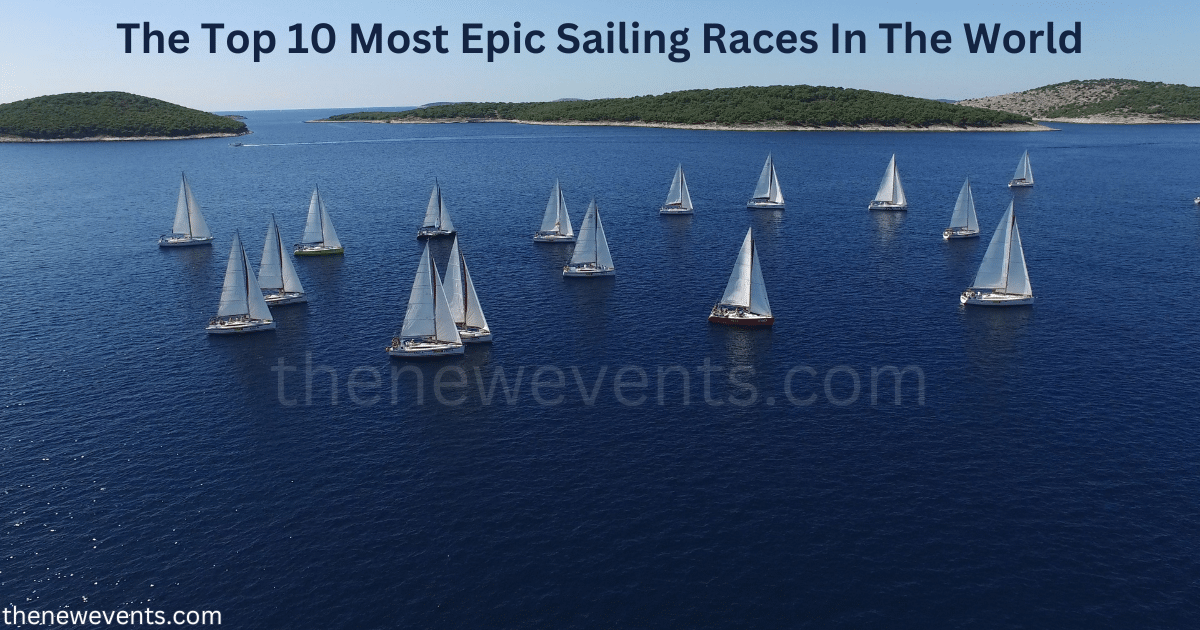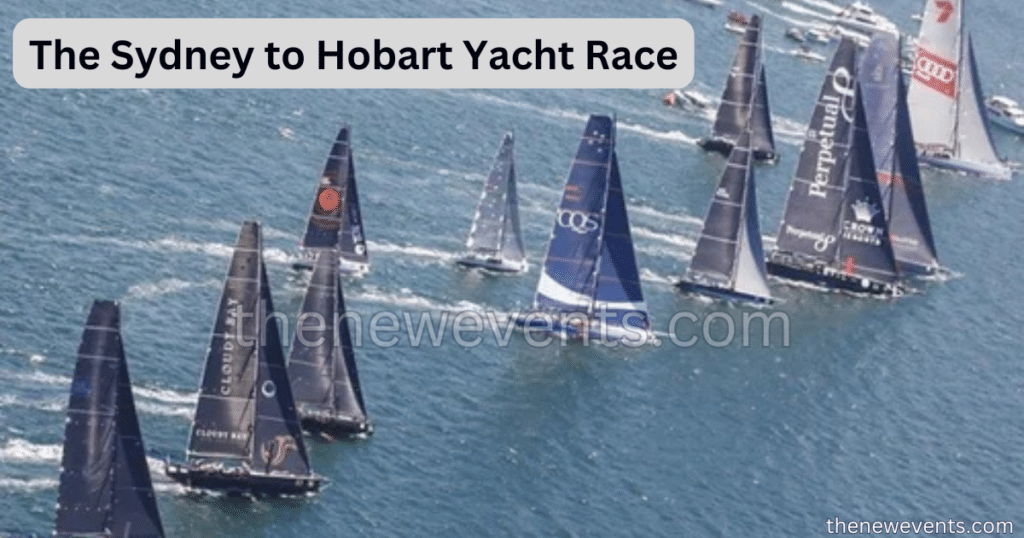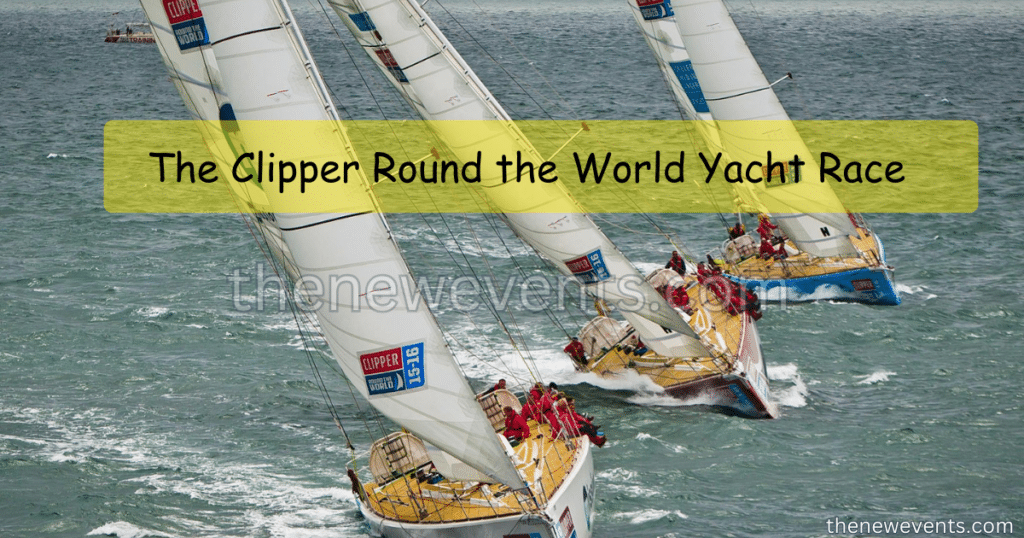The Top 10 Most Epic Sailing Races In The World

Sailing races have long been considered one of the most thrilling and challenging sports in the world, requiring a combination of skill, strategy, physical endurance, and mental toughness. The most epic sailing races are often grueling, spanning vast distances, and taking sailors across some of the most unforgiving waters on Earth. From renowned oceanic challenges to competitive inshore regattas, these races are the ultimate test for sailors and their teams.
This article explores the top 10 most epic sailing races in the world, diving into their history, significance, and what makes them legendary. Whether you’re a seasoned sailor or an aspiring enthusiast, these races are an embodiment of human determination and the raw beauty of the sea.
Key Takeaway : The Top 10 Most Epic Sailing Races In The World
- Prestigious Global Competitions: Iconic events like the America’s Cup and the Volvo Ocean Race showcase the highest level of competitive sailing, attracting the world’s best sailors and teams.
- Extreme Challenges: Races like the Vendée Globe and the Sydney to Hobart Yacht Race test sailors’ endurance and resilience, pushing them through treacherous waters and unpredictable weather conditions.
- Diverse Sailing Formats: From solo challenges in the Vendée Globe to team-based races like the Transpac and the Clipper Round the World, these races offer varied formats, each with unique demands on sailors.
- Rich History and Tradition: Events like the Fastnet Race and the Bermuda Race have long histories, having been established over a century ago, continuing to captivate sailors and fans alike with their storied legacies.
- Technological Innovation: Many of these races, especially the America’s Cup and The Ocean Race, highlight the use of cutting-edge boat designs and technology, driving innovation in the world of sailing.
1. The America’s Cup

The America’s Cup is arguably the most famous sailing race in the world and is often considered the pinnacle of sailing. First held in 1851, this prestigious event has a rich history of competition between the best sailors and teams from across the globe. The America’s Cup challenges the finest yachtsmen to race on innovative boats, showcasing cutting-edge technology and design.
History and Format:
- Origin: The America’s Cup began as a race around the Isle of Wight in England and has since evolved into a match between two boats representing their nations.
- Challenge: The race features a series of match races between the challenger (the team who wins the challenger series) and the defender (the previous winner).
- Boats: The America’s Cup is known for its use of advanced high-tech boats, with the competition now using foiling catamarans and monohulls, pushing the boundaries of sailing technology.
Significance:
The America’s Cup has witnessed historic rivalries, such as those between New Zealand and the United States. It is as much about cutting-edge technology and innovation as it is about skilled sailors who can handle some of the most sophisticated boats in the world. The race is a spectacle of engineering and precision, with teams spending millions on research and development to gain an edge.
2. The Volvo Ocean Race (now The Ocean Race)
The Volvo Ocean Race, now known as The Ocean Race, is one of the most grueling offshore races in the world. It takes sailors on a 9-month journey around the globe, covering approximately 45,000 nautical miles and navigating through some of the world’s most challenging weather conditions.
History and Format:
- Origin: First launched in 1973 as the Whitbread Round the World Race, it became the Volvo Ocean Race in 1993 and changed to The Ocean Race in 2022.
- Race Route: The race is divided into multiple legs, with stops in various ports around the world, including places like Alicante (Spain), Cape Town (South Africa), Auckland (New Zealand), and Newport (USA).
- Boats: Teams race in 65-foot racing yachts, known for their incredible speed and maneuverability. The race is known for being an intense battle of endurance, with competitors facing everything from cyclonic storms to extreme cold and heat.
Significance:
The Volvo Ocean Race is unique because it is a true test of seamanship, teamwork, and resilience. Sailors not only need to navigate through difficult waters but also need to work together under immense pressure. The race is one of the few to offer such a long duration of competition, making it a true test of endurance.
3. The Sydney to Hobart Yacht Race

The Sydney to Hobart Yacht Race is an iconic event that takes place annually on Boxing Day (December 26). The race starts in Sydney Harbour and takes sailors across 628 nautical miles to the finish line in Hobart, Tasmania. Known for its unpredictable weather and challenging sea conditions, it is one of the most prestigious offshore races in the Southern Hemisphere.
History and Format:
- Origin: The first Sydney to Hobart was held in 1945, and it has grown into one of the most famous yacht races globally.
- Route: The race begins in Sydney Harbour, and participants sail down the New South Wales coast, around the Tasman Sea, and into Bass Strait, finishing in the Derwent River in Hobart.
- Boats: The race features a variety of boats, including maxi yachts, cruiser-racers, and smaller monohulls. The race is known for attracting some of the biggest names in sailing.
Significance:
This race is a favorite among many sailors for its combination of physical challenges and the excitement of navigating unpredictable conditions. The Sydney to Hobart is famous for the fierce competition it generates and the extraordinary feats of seamanship demonstrated by the crews, particularly during storms.
4. The Vendée Globe
The Vendée Globe is a solo non-stop round-the-world sailing race that takes place every four years. It is one of the most challenging and extreme events in the world of competitive sailing. Competitors must navigate the globe on their own, without assistance, and face the treacherous waters of the Southern Ocean.
History and Format:
- Origin: First held in 1989, the Vendée Globe is named after the French department of Vendée, where the race starts and finishes.
- Route: The race begins in Les Sables-d’Olonne, France, and involves sailing down the Atlantic, rounding the Cape of Good Hope, crossing the Southern Ocean, and making a final return to France.
- Boats: Sailors race on high-tech 60-foot IMOCA yachts designed for extreme solo sailing. These boats are known for their speed and ability to handle rough conditions.
Significance:
The Vendée Globe is considered the ultimate solo sailing challenge. The race tests the mental toughness and resilience of competitors, as sailors face isolation and exhaustion over the course of several months. It is a race for the most daring and skilled sailors who can navigate through the world’s roughest oceans alone.
5. The Transpacific Yacht Race (Transpac)
The Transpacific Yacht Race, or Transpac, is one of the oldest and most prestigious long-distance races in the world. This biennial race, which starts in Los Angeles, California, and finishes in Honolulu, Hawaii, covers approximately 2,225 nautical miles across the Pacific Ocean.
History and Format:
- Origin: First held in 1906, the Transpac has become a hallmark of sailing in the Pacific, attracting both seasoned competitors and newcomers.
- Route: The race starts off the coast of California, and competitors sail across the Pacific, navigating the challenging waters until they reach the finish line in Hawaii.
- Boats: Sailboats of all sizes and classes participate in the Transpac, from large maxi yachts to smaller, more agile boats. The race is known for having boats that specialize in both speed and ocean endurance.
Significance:
The Transpac is a test of both sailing skill and endurance, requiring competitors to master both offshore navigation and tactics in the Pacific’s unpredictable weather patterns. The race is a spectacular display of teamwork, speed, and stamina, with the prize being a significant achievement in the global sailing community.
6. The Fastnet Race
The Fastnet Race is a prestigious offshore race held every two years, starting from Cowes on the Isle of Wight and ending in Plymouth, England. It covers approximately 608 nautical miles and is considered one of the most challenging offshore races due to the unpredictable weather in the North Atlantic.
History and Format:
- Origin: The first Fastnet Race was held in 1925, and since then, it has become one of the most sought-after events in the offshore sailing calendar.
- Route: The race starts in Cowes, heads out to the Fastnet Rock off the coast of Ireland, and then returns to Plymouth.
- Boats: The race attracts a variety of boats, from high-performance racing yachts to cruising boats. It is known for having a highly competitive field.
Significance:
The Fastnet Race is notorious for its harsh conditions, and the event is often described as the ultimate test of sailing endurance. The race’s combination of unpredictable weather, strong tides, and rough seas makes it a legendary event for sailors.
7. The Clipper Round the World Yacht Race

The Clipper Round the World Yacht Race is a unique event in the sailing world because it is open to amateur sailors who want to experience the thrill of racing across the globe. Participants sail on identical 70-foot yachts, competing in a series of legs across different continents.
History and Format:
- Origin: Launched in 1996, the Clipper Round the World Race was created by Sir Robin Knox-Johnston, the first person to sail solo nonstop around the world.
- Route: The race spans several months, with sailors competing in various stages, including stops in places like London, Australia, and the United States.
- Boats: The race uses a fleet of 70-foot Clipper 70 yachts, all equipped with the same specifications to ensure fairness.
Significance:
The Clipper Round the World Yacht Race is an incredible event for amateur sailors, offering them the opportunity to circumnavigate the globe. The race offers a mix of competitive sailing and adventure, attracting participants from all walks of life who dream of sailing around the world.
8. The Transatlantic Race
The Transatlantic Race is one of the oldest and most prestigious races in the world, dating back to 1866. It covers the distance between the United States and Europe, typically starting in Newport, Rhode Island, and finishing in either the United Kingdom or France.
History and Format:
- Origin: The Transatlantic Race has been a hallmark of transatlantic sailing for over a century, bringing together some of the world’s best sailors.
- Route: The race starts on the U.S. East Coast and ends on the European mainland, covering about 3,000 miles across the Atlantic.
- Boats: The race features a range of boats, with the majority being large racing yachts that are capable of enduring the harsh conditions of the North Atlantic.
Significance:
This historic race is not only a test of sailing skill but also a symbol of the pioneering spirit of ocean exploration. It challenges sailors to navigate some of the world’s most difficult and unpredictable waters, making it one of the most epic sailing races.
9. The Cowes Week
Cowes Week is one of the world’s oldest and most famous regattas, held annually in Cowes, Isle of Wight. It is a week-long event that draws hundreds of yachts from around the world, ranging from amateur sailors to professional competitors.
History and Format:
- Origin: The first Cowes Week was held in 1826, and the regatta has continued to grow in prestige ever since.
- Event: It consists of multiple races across a week, with various classes of boats competing in the waters around the Isle of Wight.
- Boats: The event features a wide variety of boats, from classic yachts to modern racing machines.
Significance:
Cowes Week is a celebration of sailing, with a focus on both competition and camaraderie. The regatta brings together some of the best sailors and is a staple in the international sailing calendar, attracting a mix of professional and amateur participants.
10. The Bermuda Race
The Bermuda Race, also known as the Newport Bermuda Race, is one of the oldest and most revered offshore races in the world. Held every two years, it challenges competitors to sail the 635 nautical miles from Newport, Rhode Island, to Bermuda.
History and Format:
- Origin: The race began in 1906 and has been held periodically ever since.
- Route: Starting in Newport, the race takes sailors across the North Atlantic to the tropical waters of Bermuda.
- Boats: The race attracts a variety of boats, including large yachts, maxi yachts, and racing cruisers.
Significance:
The Bermuda Race is legendary for its combination of challenging open-water conditions and the dramatic shift from the cold, turbulent waters of the North Atlantic to the calmer, warmer waters near Bermuda.
Also Read : What Sailboats Are Made In The USA?
Conclusion
These ten sailing races represent the pinnacle of competitive sailing, offering challenges that push sailors to their physical, mental, and technical limits. Whether navigating the world’s oceans solo or racing in a team of passionate competitors, these events embody the spirit of adventure, skill, and endurance.
From the cutting-edge technology of the America’s Cup to the solitary test of willpower in the Vendée Globe, these races have captivated the imagination of sailors and fans for generations. Each race holds its own unique appeal, but they all share one common thread: they are epic challenges in the world of sailing.
FAQs
1. Which is the most prestigious sailing race in the world?
The America’s Cup is often considered the most prestigious sailing race, combining cutting-edge technology with elite sailors from around the world.
2. How long does the Volvo Ocean Race last?
The Volvo Ocean Race, now The Ocean Race, lasts about 9 months, covering around 45,000 nautical miles across multiple legs.
3. What is the longest sailing race in the world?
The Vendée Globe is one of the longest sailing races, taking solo sailors around the world without stops, which can last up to three months.
4. Is the Sydney to Hobart Yacht Race dangerous?
Yes, the Sydney to Hobart is notorious for its unpredictable weather, especially the fierce storms that often develop in the Bass Strait.
5. Can amateur sailors participate in these epic races?
While most of these races are for highly skilled sailors, some, like the Clipper Round the World Yacht Race, are open to amateur participants, offering a rare chance for non-professionals to compete on the world stage.





